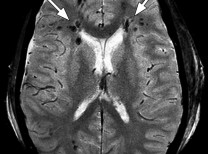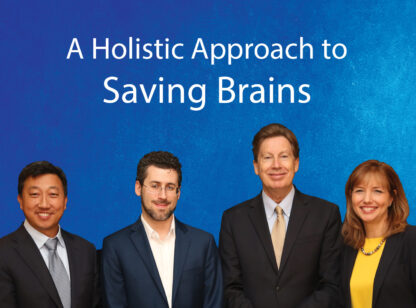Recent media attention has been paid to the serious risk of traumatic brain injury in National Football League players. An upcoming film featuring Will Smith portrays the dramatic revelations of Dr. Bennet Omalu, who researched brain injuries in professional football players and documented evidence of chronic traumatic encephalopathy (CTE). CTE is a debilitating condition with long-term, life-altering consequences resulting from traumatic brain injury (TBI). The film gives viewers a glimpse into the life of Dr. Omalu and the NFL’s efforts to hide his research results. This movie is timely as our young children go off to Pop Warner football, high school, and college. Parents, athletic directors and school officials need to be aware of the reality of TBI, particularly in young athletes, and should not be cavalier.
The reality of TBI is felt by hundreds of thousands of Americans. TBI can be broadly categorized as mild or severe. Mild TBI can result from an injury after which confusion or disorientation lasts less than half an hour and can cause moodiness, forgetfulness, loss of cognitive function and headaches. Severe brain injury is associated with the individual losing consciousness for over half an hour or an open head wound. These patients may remain unconscious or in a coma and as most are recovering, they may suffer severe debilitation and motor/language impairment, learning disabilities, or psychological and emotional problems. Rate and level of recovery are patient-dependent and can take many years even with aggressive therapy.
Football is not the only athletic event or activity in which TBI is a significant risk. Football is actually the second most common in the USA at 47,000 per year. Surprisingly, cycling is first in sports-related head injuries. Every year about a half a million people visit hospital emergency departments for bicycling injuries, over 85,000 of which were head injuries resulting in about 400 deaths. Baseball and softball were Number 3 at just over 38,000.
Other sporting activities with reported head injuries exceeding 20,000 per year were: basketball, water-sports, powered recreational vehicles (ATVs and the like), soccer and skateboarding. Use of training facilities/gyms resulted in about 18,000 head injuries per year. These statistics are total emergency department visits. Over 40,000 children visited emergency departments for head injuries. About half of that number visited for football and baseball/softball injuries. It’s not surprising that the true numbers are estimated to be much higher as these represent only those head injuries seen in the emergency department.
So what can we do? How can we protect ourselves and our loved ones from the debilitating effects of traumatic brain injury? Wear protective headgear appropriate for the sport. If headgear is not available, carefully consider the risks vs. benefits of participation in any athletic activity. If traumatic head injury has been sustained even though wearing protective head gear, then a visit to your family physician and/or neurologist may be advised. Advanced medical imaging tests of the brain may be ordered by your physician. Since standard MRI and CT brain studies will typically not show minor traumatic changes to the brain, a dedicated Traumatic Brain Injury (TBI) Protocol MRI study may be required for interrogation of otherwise subtle or occult injuries including microhemorrhages and diffuse axonal injury (DAI).
Dr. Hancock is a board certified neuroradiologist with Desert Medical Imaging; Bernadette Greenwood is director of clinical services, as well as an author and educator. For more information visit www.DesertMedicalImaging.com or call (760) 694.9559.









































Comments (0)